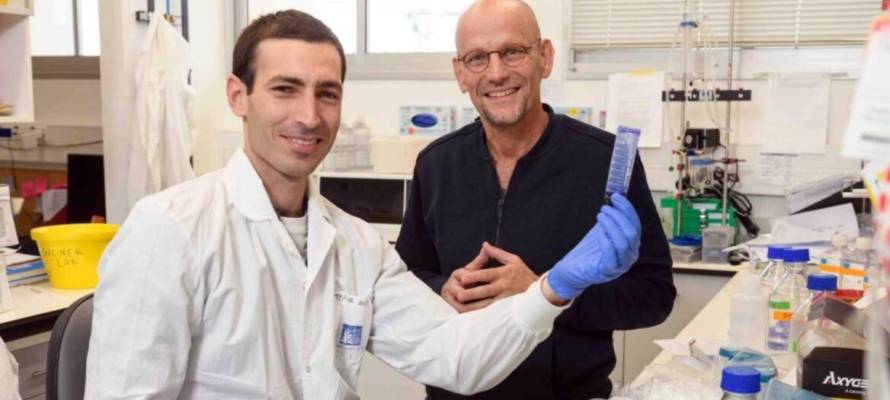The small molecule reduces damaging inflammation and improves heart function in mouse models of heart attack, say Israeli scientists.
By ISRAEL21c
A non-toxic blue dye commonly used in biology labs helps repair damaged heart tissue in mice, say researchers at the Weizmann Institute of Science in Israel.
As described in the Journal of Clinical Investigation Insight, a dye molecule called Chicago Sky Blue reduced scar size and improved heart function of adult mice following heart attack.
Once damaged, heart muscle cells (cardiomyocytes) can never regenerate. But when research student Oren Yifa and his team injected Chicago Sky Blue into the post-heart attack mice in the molecular cell biology lab of Prof. Eldad Tzahor, the mice’s heart function improved.
Their research suggests that the dye works in two ways: reducing inflammation and inhibiting the actions of a certain enzyme overproduced in heart disease.
“In my lab, most of the time we focus on finding drugs that can promote cardiomyocyte renewal,” said Tzahor.
“This research showed us that we also need to pay attention to other processes that take place following a heart attack, including inflammation and impairment in contractility. Because Chicago Sky Blue is non-toxic, we think it might be tested to prevent further damage following the initial injury of a heart attack.”
The results point to the potential of Chicago Sky Blue as a therapeutic agent for enhancing cardiac repair and function even when heart muscle cells are permanently damaged.
Do You Love Israel? Make a Donation - Show Your Support!
Donate to vital charities that help protect Israeli citizens and inspire millions around the world to support Israel too!
Now more than ever, Israel needs your help to fight and win the war -- including on the battlefield of public opinion.
Antisemitism, anti-Israel bias and boycotts are out of control. Israel's enemies are inciting terror and violence against innocent Israelis and Jews around the world. Help us fight back!




